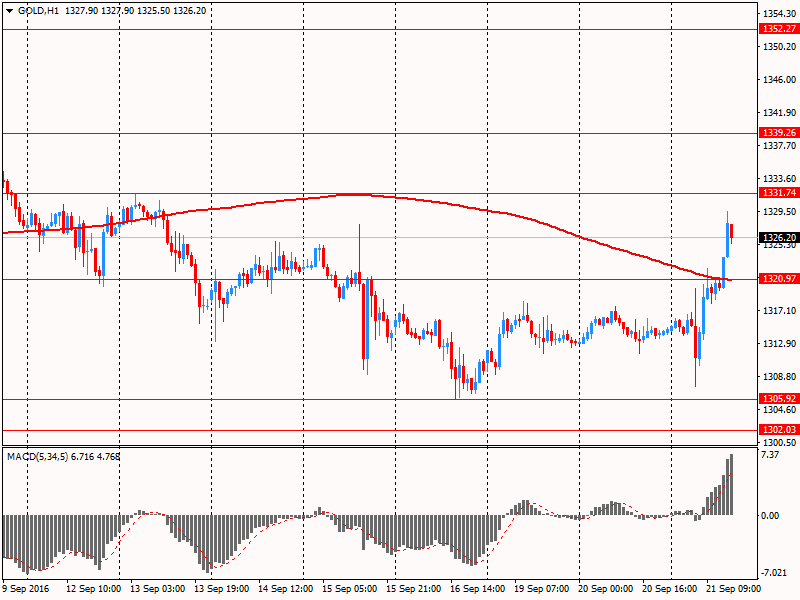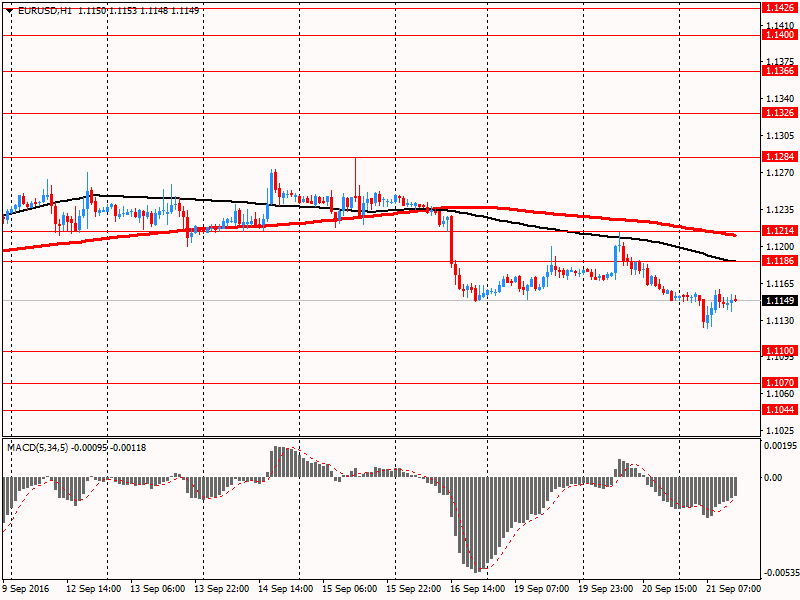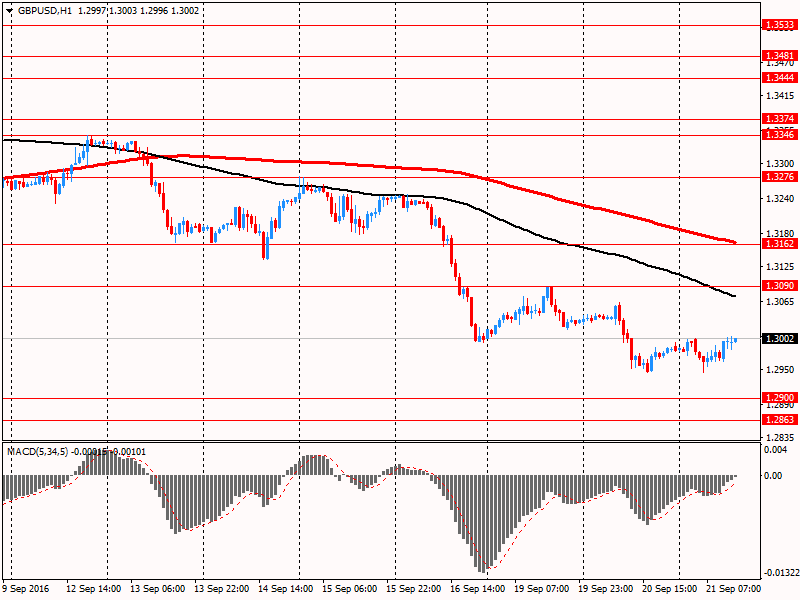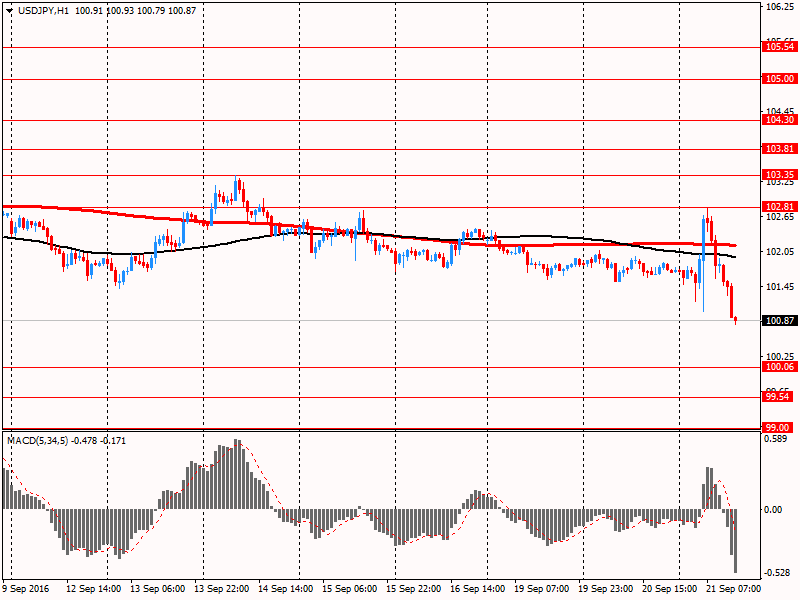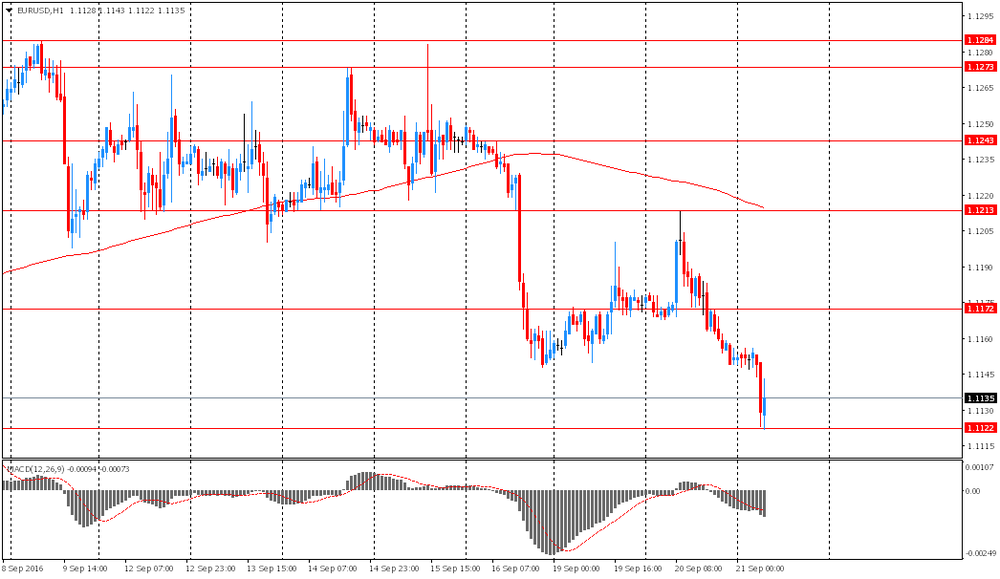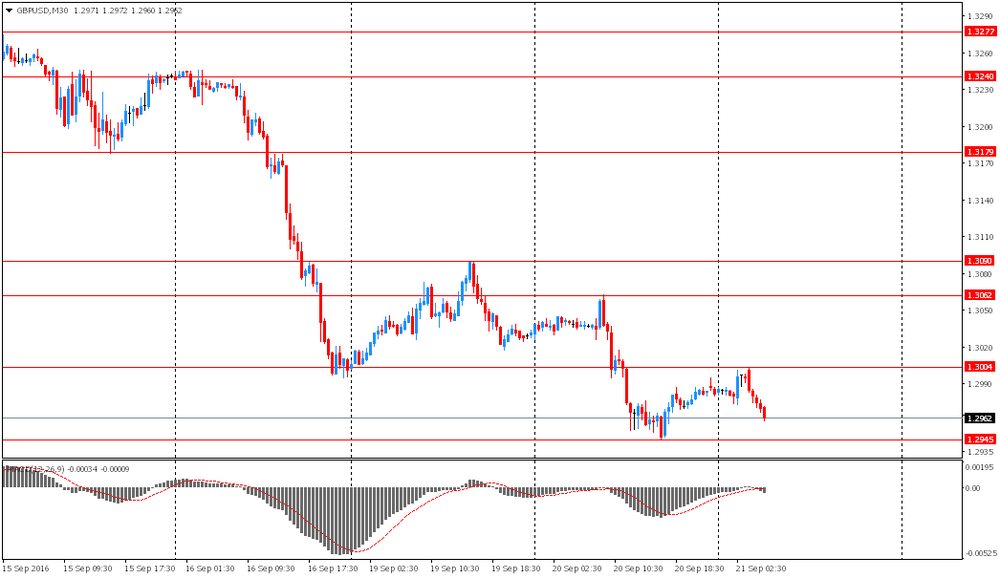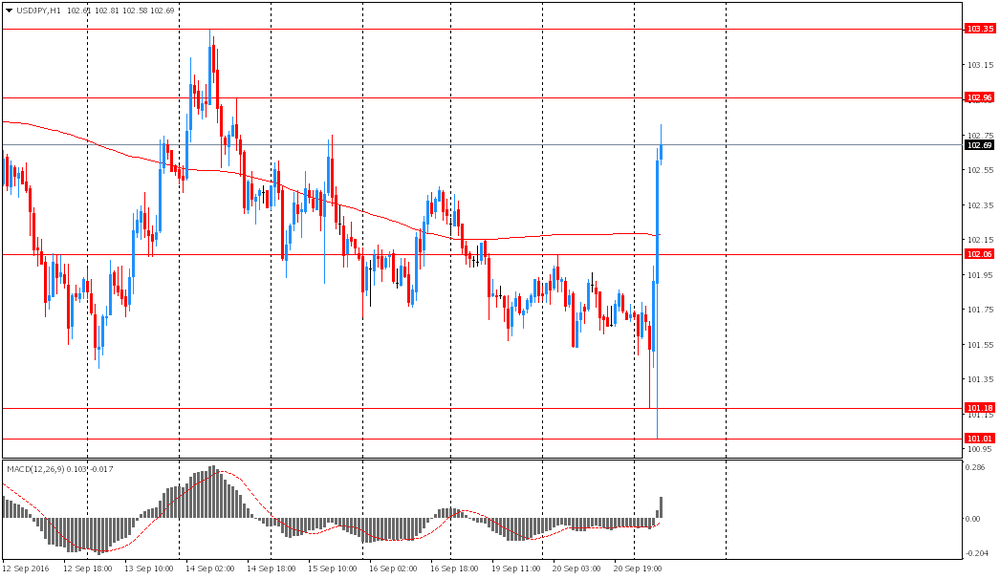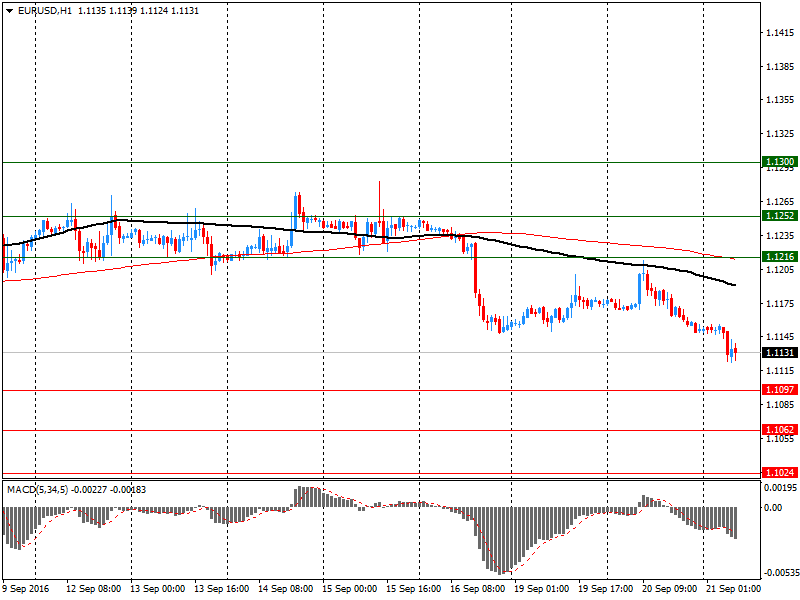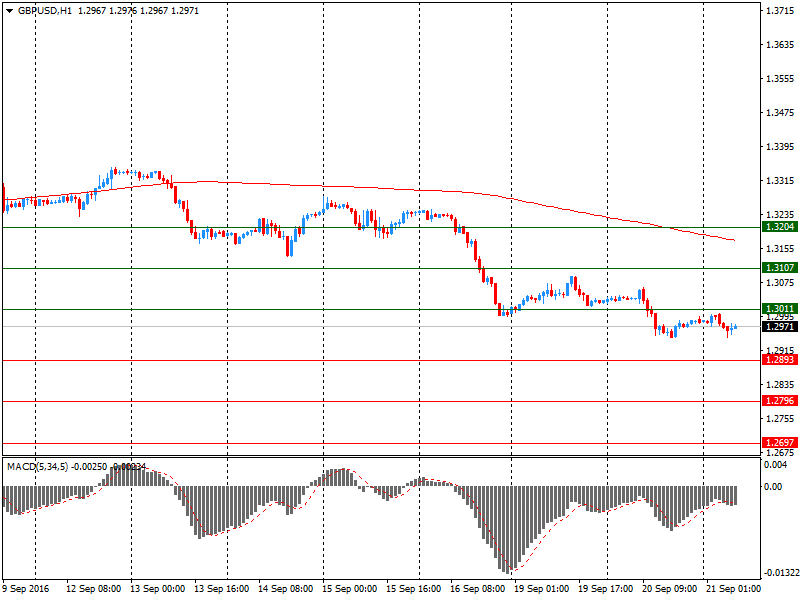Noticias del mercado
-
23:00
New Zealand: RBNZ Interest Rate Decision, 2% (forecast 2%)
-
20:00
U.S.: Fed Interest Rate Decision , 0.5% (forecast 0.5%)
-
16:30
U.S.: Crude Oil Inventories, September -6.2 (forecast 2.25)
-
16:19
Chinese Premier, Li: the relationship with the United States will develop regardless of who wins the election
"China and the United States will continue to develop a positive relation no matter who wins the US presidential election," - said Chinese Premier Li Keqiang at the economic forum in New York, at the same time refusing to name the candidate he supports. Republican Donald Trump threatened to raise tariffs on Chinese goods, and to insist on more stringent trade talks if elected. His Democratic rival Hillary Clinton changed tactics on trade, spoke out against the Pacific Trade Agreement, which it had previously approved of.
Li Keqiang, who attended the UN General Assembly in New York, said that the US elections are an internal matter. "No matter who will be elected, I believe that the Chinese-US relations will continue to grow steadily and in a positive direction." In addition, Li Keqiang responded to complaints from foreign business leaders about the limited access to the Chinese market, saying that China was open to foreign investment, although some sectors of the economy have not yet "matured".
-
15:53
Swiss National Bank leaves expansionary monetary policy unchanged - Quarterly Bulletin
The Swiss National Bank (SNB) is maintaining its expansionary monetary policy. Interest on sight deposits at the SNB is to remain at - 0.75% and the target range for the three-month Libor is unchanged at between - 1.25% and - 0.25%. At the same time, the SNB will remain active in the foreign exchange market, as necessary. The negative interest rate and the SNB's willingness to intervene in the foreign exchange market are intended to make Swiss franc investments less attractive, thereby easing upward pressure on the currency. The Swiss franc is still significantly overvalued. The SNB's expansionary monetary policy is aimed at stabilising price developments and supporting economic activity.
The new conditional inflation forecast has been revised slightly downwards compared to the June forecast. Up to the first quarter of 2017, the path of inflation remains almost the same. Thereafter, the slightly less favourable global economic outlook dampens inflation in Switzerland. For 2016, the inflation forecast remains unchanged at - 0.4%. For 2017, the SNB expects inflation of 0.2%, compared to 0.3% forecast in the last quarter, while for 2018, the forecast has fallen from 0.9% to 0.6%. The conditional inflation forecast is based on the assumption that the three-month Libor remains at - 0.75% over the entire forecast horizon.
-
15:46
Option expiries for today's 10:00 ET NY cut
EURUSD: 1.1200 (EUR 250 M), 1.1235-1.1240 (EUR 269 M), 1.1260-1.1265 (EUR 419 M)
USDJPY: 100.00 (USD 1,150 M), 100.50-100.58 (USD 320 M), 101.25-101.40 (USD 266 M), 101.60-101.75 (USD 410 M), 102.00 (USD 230 M), 102.50-102.65 (USD 255 M), 103.00-103.15 (USD 298 M)
GBPUSD: 1.2800 (GBP 301 M), 1.3128-1.3130 (GBP 194 M), 1.3150 (GBP 444 M)
AUDUSD: 0.7450-0.7455 (AUD 256 M), 0.7525 (AUD 249 M), 0.7680 (AUD 380 M)
USDCAD: 1.3035-1.3050 (USD 637 M), 1.3185-1.3200 (USD 439 M), 1.3250 (USD 832 M), 1.3300 (USD 437 M)
-
15:44
-
15:38
test
-
14:33
Canadian wholesale sales increased for a fourth consecutive month
Wholesale sales rose 0.3% to $56.5 billion in July, a fourth consecutive monthly gain. Increases were recorded in five of seven subsectors, led by the motor vehicle and parts subsector and the food, beverage and tobacco subsector.
In volume terms, wholesale sales were unchanged in July.
Sales rose in five of seven subsectors, representing 72% of total wholesale sales. The motor vehicle and parts subsector recorded the largest increase in dollar terms in July, up 2.0% to $11.1 billion. This was the subsector's fourth consecutive monthly gain. Sales in the motor vehicle industry (+3.0%) rose to a record high, and accounted for most of the advance in the subsector. Excluding this subsector, wholesale sales were down 0.1% in July.
Sales in the food, beverage and tobacco subsector rose 1.2% to $11.0 billion in July. While sales increased in all of the subsector's industries, the food industry (+1.3%) contributed the most to the gain.
In the machinery, equipment and supplies subsector, sales rose 0.6% to $11.2 billion in July, the highest level since January 2016. Three of the four industries in the subsector contributed to the increase, led by the construction, forestry, mining, and industrial machinery, equipment and supplies industry (+2.6%).
Following two consecutive declines, sales in the miscellaneous subsector rose 0.9% to $7.0 billion, led by the agricultural supplies industry (+3.9%).
Following five consecutive increases, the personal and household goods subsector was down 2.0% to $8.1 billion. Declines in the pharmaceuticals and pharmacy supplies industry (-3.5%) accounted for most of the sales decrease. Imports and exports of pharmaceutical and medicinal products were also lower in July.
-
14:31
European session review: the US dollar significantly lower against the yen
The following data was published:
(Time / country / index / period / previous value / forecast)
6:30 Japan Press Conference of the Bank of Japan
8:30 UK net borrowing state. sector billion. August 2.43 -10.3 -10.05
The Japanese yen has strengthened considerably against the dollar, recovering all the ground lost after the announcement of the Bank of Japan. The catalyst for the growth of the yen were the statements of the Bank of Japan's governor Haruhiko Kuroda. He noted that the Japanese economy emerged from a state of deflation, which lasted 15 years. "The Bank of Japan will continue to pursue a flexible monetary policy and did not hesitate to implement additional stimulus measures if needed to achieve the inflation target as soon as possible and is still a priority for the Central Bank." - Said Kuroda, adding that now the Central Bank is focused on targeting bond yields and ready to reduce the volume of purchases of bonds. Kuroda also said that the recent changes in the policy framework were 50% due to fears that the combination of negative interest rates and quantitative easing has a very negative impact on banks' profits and consumer sentiment.
Recall, at the end of the two-day meeting, the Bank of Japan left interest rates on deposits at the level of -0.1%. The Board also left unchanged the target volume of purchases of government bonds - at 80 trillion yen per year. However, the Central Bank unexpectedly introduced a target rate of return on 10-year government bonds at 0% within the framework of strengthening the fight against deflation. This measure was taken after the assessment of existing measures that do not yield results. The Bank of Japan first introduced the target level for the long-term rates, and it happened at a time when other central banks have difficulty in finding ways of accelerating inflation. "Investors reacted positively to the decision, considering that the Central Bank will make every effort to overcome deflation," - said Kengo Suzuki analyst at Mizuho Securities.
The British pound rose moderately against the US dollar, as investors adjusted their positions ahead of Fed's decision on rates. Investors' attention is also drawn by the British data. Office for National Statistics reported that the results of last month's budget deficit was lower than in the same period of 2015. Net borrowing of the public sector decreased by 0.9 billion pounds compared to August 2015 and amounted to 10.5 billion pounds.
Also in focus were revised forecasts from the Organisation for Economic Cooperation and Development. The OECD lowered the forecast for world GDP in 2016 to 2.9%. In June, the OECD expected an increase of 3%. Global GDP in 2017 deteriorated to 3.2% from 3.3%. A slight decrease reflects the weakening of forecasts of major economies of the world, especially in Britain, in 2017, partially offset by the gradual improvement of the situation in the main emerging markets. Also, the OECD pointed out the very weak growth in trade. The rate of increase in world trade slowed down approximately double compared to pre-crisis levels.
The US dollar fell slightly against the euro, returning to the opening level due to investors caution before the announcement of the Fed meeting outcome. The median estimate of more than 100 economists polled to Reuters show that rates will increase to 0.50-0.75 percent in the fourth quarter, and, most likely, in December (average probability of 70 percent). Recall that in a survey last month, the chances of a hike in December were at 57.5 percent.
EUR / USD: during the European session, the pair fell to $ 1.1122, but then went back to $ 1.1160
GBP / USD: during the European session, the pair rose to $ 1.3005 from $ 1.2944
USD / JPY: during the European session, the pair has collapsed to Y100.94 from Y102.79
-
14:30
Canada: Wholesale Sales, m/m, July 0.3% (forecast 0.2%)
-
14:03
Why We Still See EUR/USD Reaching 1.20 Before It Reaches 1.00 - Danske
"We keep our EUR/USD forecasts unchanged and still expect EUR/USD to continue to trade in the 'post-Brexit' range of 1.10- 1.14 in coming months. We target EUR/USD at 1.12 in 1-3M.
While we believe that there will be some slowdown in the Eurozone in coming months, we still do not expect the ECB to cut rates. Political uncertainty is likely to increase as the US presidential elections are moving closer.
However, political uncertainty could weigh on both the EUR and the USD and thus uncertainty is more likely to be source of increased volatility rather than a directional risk. Longer term, we maintain our long-held view that the undervaluation of the EUR and the wide eurozone-US current account differential are longer-term EUR positives.
Hence, EUR/USD will reach 1.20 before it reaches 1.00, in our view. We target 1.14 in 6M and 1.18 in 12M".
Copyright © 2016 Danske, eFXnews™
-
14:00
Orders
EUR/USD
Offers 1.1160-65 1.1180 1.1200 1.1220-25 1.1245-50 1.1280 1.1300
Bids 1.1130 1.1100 1.1080 1.1050 1.1025-30 1.1000
GBP/USD
Offers 1.3000-05 1.3020 1.3050 1.3070 1.3085 1.3100 1.3125-30 1.3150
Bids 1.2965 1.2940-50 1.2900 1.2880 1.2850 1.2830 1.2800
EUR/GBP
Offers 0.8600 0.8625-30 0.8650 08685 0.8700
Bids 0.8565 0.8540 0.8520 0.8500 0.8485 0.8450
EUR/JPY
Offers 113.85 114.00 114.20 114.50 114.80-85 115.00 115.25 115.50
Bids 113.20 113.00 112.50-55 112.35 112.00 111.80 111.50
USD/JPY
Offers 102.25 102.45-50 102.80 103.00 103.30 103.50
Bids 101.80 101.50 101.20 101.00 100.80 100.50 100.30 100.00
AUD/USD
Offers 0.7600 0.7620 0.7660-65 0.7685 0.7700
Bids 0.7565 0.7550 0.7530-35 0.7500 0.7485 0.7465 0.7445-50
-
12:10
AUD The Most Vulnerable Vs USD If The Fed Hikes Today As We Expect - BNPP
"The minutes from the Reserve Bank of Australia's September meeting signalled that the RBA is in no hurry to make any changes to current settings, consistent with the view from our economists that they are unlikely to cut rates further, and consistent with AUD rates market pricing for minimal easing over the next 12 months. We do not think RBA rate cuts are required for AUDUSD to weaken.
BNP Paribas STEER, our short-term fair value model, signals the key driver of AUDUSD is global equities: a 5% decline in MSCI world corresponds with a 3.5% decline in AUDUSD's STEER.
Given our economists' expectations for a Fed rate hike at tomorrow's meeting, we see the risk environment as vulnerable and continue to recommend short AUDUSD through options".
Copyright © 2016 BNP Paribas™, eFXnews™
-
11:24
OECD dowgrades global economic outlook due to downgrades in major advanced economies
The OECD projects that the global economy will grow by 2.9 percent this year and 3.2 percent in 2017, which is well below long-run averages of around 3¾ percent.
The small downgrade in the global outlook since the previous Economic Outlook in June 2016 reflects downgrades in major advanced economies, notably the United Kingdom for 2017, offset by a gradual improvement in major emerging-market commodity producers.
Growth among the major advanced economies will be subdued. In the United States, where solid consumption and job growth is countered by weak investment, growth is estimated at 1.4 percent this year and 2.1 percent in 2017. The euro area is projected to grow at a 1.5 percent rate in 2016 and a 1.4 percent pace in 2017. Germany is forecast to grow by 1.8 percent in 2016 and 1.5 percent in 2017, France by 1.3 percent in both 2016 and 2017, while Italy will see a 0.8 percent growth rate this year and next.
-
10:39
BOE Agents' Summary of Business Conditions, 2016 Q3
-
The annual rate of activity growth had slowed overall as uncertainty rose following the EU referendum, although it remained positive. However, business sentiment improved slightly in August following a marked dip in the immediate aftermath of the referendum.
-
Consumer spending growth and confidence had been more resilient. Although housing market activity had fallen markedly in London and in parts of the surrounding area, it had held up relatively well in other parts of the United Kingdom.
-
Companies' investment and employment intentions had fallen, and were consistent with broadly flat levels of capital spending and employment over the coming six to twelve months.
-
-
10:38
UK public sector net borrowing improves in August
-
The data in this bulletin presents the latest fiscal position of the UK public sector as at 31 August 2016 and so includes 2 months of post-EU referendum data. However, estimates for the latest period always contain a substantial forecast element and the figures have to be considered in this light.
-
Public sector net borrowing (excluding public sector banks) decreased by £4.9 billion to £33.8 billion in the current financial year-to-date (April to August 2016), compared with the same period in 2015.
-
Public sector net borrowing (excluding public sector banks) decreased by £0.9 billion to £10.5 billion in August 2016, compared with August 2015.
-
Public sector net debt (excluding public sector banks) at the end of August 2016 was £1,621.5 billion, equivalent to 83.6% of gross domestic product (GDP); an increase of £52.0 billion compared with August 2015.
-
-
10:30
United Kingdom: PSNB, bln, August -10.05 (forecast -10.3)
-
10:21
Japan's Ishihara: Abenomics will be accelerated in conjunction with BOJ
-
govt welcomes BOJ commitment to achieving 2% inflation target
-
important for BOJ to communicate with market
*via forexlive -
-
10:21
Option expiries for today's 10:00 ET NY cut
EUR/USD: 1.1000 (EUR 500m) 1.1030 (1.17bln) 1.1200 (728m) 1.1250 (493m) 1.1300 (297m)
USD/JPY: 100.00 (USD 433m) 100.75 (500m) 101.30 (250m) 101.50 (455m) 102.00 (412m) 102.40-50 (640m) 103.00 (1.27bln)
NZD/USD 0.7300 (NZD 240m) 0.7315 (181m) 0.7330-50 (350m)
-
09:09
Today’s events
At 11:00 GMT the Bank of England's Quarterly Bulletin
At 13:00 GMT quarterly inflation report from the SNB
At 18:00 GMT Economic Outlook from the FOMC, FOMC decision on the nterest rate and the accompanying FOMC statement
In the 18:30 GMT FOMC Press Conference
At 21:00 GMT RBNZ decision on interest rate and the accompanying RBNZ statement
Also today, Japan celebrates the autumn equinox
-
08:47
Asian session review: The Bank of Japan took measures that even the market can’t fully understand
The yen has fallen by updating the session low despite the fact that BoJ did not change the intrest rate level, the regulator said that it will continue to increase monetary base, while inflation stabilizes above 2%. In addition, the Bank of Japan made a surprise move, targeting a level for the 10-year interest rates in order to strengthen the fight against deflation. This measure was adopted after the Bank management's assessment of existing measures which have not led to the achievement of inflation target of 2% for two years, as it was planned earlier. Also, traditionally the Bank of Japan announced its readiness to further reduce the negative interest rates on deposits.
Earlier today data on the trade balance of Japan was published. According to the report of the Ministry of Finance of Japan, the foreign trade deficit amounted to Y19,0 billion in August, but the forecast indicated a surplus of Y202,3 billion. In July, the trade surplus was Y513,2. Japan's exports fell by -9.6% compared to the same period of the previous year. Economists had expected a fall to -4.8%. Reduced exports continues the eleventh consecutive month. Exports to Europe decreased by 0.7% in the US to 14.5%, while in China -8.9%. Year-on-year imports fell by -17.3% compared to August of the previous year.
Today, a key event for markets will be the announcement of the Fed's decision on monetary policy. Mixed US data recently clouded the prospects of a Fed hike. Judging by the futures market, investors assess the probability of a hike at this meeting at only 18%.
EUR / USD: during the Asian session the pair fell to $ 1.1120
GBP / USD: during the Asian session the pair fell to $ 1.2945
USD / JPY: rose to Y102.80 in the Asian session
-
08:38
BOJ's Kuroda says Japanese economy no longer in deflation
-
08:36
USD Into FOMC: Will This Be The Start Of A New Trend? - BofA Merrill
"Fed may send conditional hints of upcoming hike:
The Federal Reserve meeting on September, 21 is likely to be eventful. While the FOMC is unlikely to deliver a rate hike, we think the committee will have to communicate that a hike is still likely before year-end. This means that the communication would have to sound cautiously hawkish, which is not an easy task.
We expect the FOMC to note that the balance of risks are nearly balanced and for the dots to shift down by 25bp across the curve. In our view, Fed Chair Yellen is likely to make the case for a hike before year-end in the press conference, but with an emphasis on the fact that it is dependent on continued improvement in the data.
FX Implications: Start of A New Trend?
The "cautiously hawkish" tone that we expect from the FOMC meeting is likely to be mildly USD-supportive, but we doubt it is the start of a new trend.
An upbeat economic assessment and nearly-balanced economic risks would support market pricing for a December hike, limiting USD downside, in our view. However, with the market pricing just over one hike between now and end-2017, we believe a necessary condition for the USD to rally is a consistent pattern of better US data allowing the market to price a meaningful pace of hikes in 2017 and 2018. Until then, the USD is likely to be range bound. That said, a residual expectation for Fed hikes is likely enough to limit significant USD downside given most G10 central banks are easing, but the dollar is unlikely to rally either.
Additionally, the recent shift by our US Rates Team's to a short real rates stance also suggests USD risks are more on the upside than the downside. The USD has benefitted over the past week as US real yields have risen between 6 and 18 basis points, driving a steepening of the rates curve. While the USD is typically negatively correlated with the shape of the yield curve, it has rallied because the curve steepening has been driven by real yields a relationship we have highlighted on many occasions. Should a real rate-led steepening of the curve continue, we would expect the USD to benefit. Indeed, the dollar continues to look undervalued relative to real yield differentials as we have noted recently.
However, we believe there are two risks around real yields for the dollar.
First, if the Fed were to more explicitly (through its Sep forecasts or communications) signal it will strategically overshoot its inflation target, real yields will fall, breakevens will rise and the USD will suffer. Our base case does not see this as a possibility for the September meeting, but Ethan Harris has argued the Fed could adopt this strategy to extend the business cycle allowing more room for rates to rise. Some belief that the Fed would stay 'behind the curve' on inflation earlier this year was a key reason for the USD selloff.
Second, if the BoJ focuses, as we expect, on maintaining policy flexibility as opposed to implementing significant new stimulus, the market could again interpret this as a policy constraint, pushing Japanese real yields higher, equities lower, and leading to a stronger Yen. This sentiment could spread to the ECB suggesting the USD would likely struggle against its G3 counterparts. This is why the BoJ meeting (happening hours before the Fed next Wednesday) is likely to be more consequential for FX markets than the FOMC".
Copyright © 2016 BofAML, eFXnews™
-
08:34
ECB Board Member, Praet: French economic performance "surprisingly weak"
ECB's chief economist, Peter Praet gave an interview to the famous French business publication L'opinion. The official said that recent economic indicators for France, seemed "surprisingly weak" and the main problem he sees is the labor market. Praet also promised to promote the expansion of Franco-German relations. With regard to the policy of the European Central Bank, confirmed willingness to maintain a very high level of financial support to the region and called for European banks to adapt to the negative interest rates.
-
08:29
The Wall Street Journal about the Bank of Japan's measures
-
An unexpected step launching a 10-year interest rate target
-
Following an internal review of existing measures that failed to achieve 2% inflation in a promised two-year time frame
-
Bank to start targeting 10-year interest rates ... committing to keep them around zero
-
Will continue QQE until inflation "exceeds" 2%
-
-
08:27
Options levels on wednesday, September 21, 2016:
EUR/USD
Resistance levels (open interest**, contracts)
$1.1300 (2530)
$1.1252 (1037)
$1.1216 (425)
Price at time of writing this review: $1.1131
Support levels (open interest**, contracts):
$1.1097 (3395)
$1.1062 (6122)
$1.1024 (3081)
Comments:
- Overall open interest on the CALL options with the expiration date October, 7 is 35565 contracts, with the maximum number of contracts with strike price $1,1400 (4704);
- Overall open interest on the PUT options with the expiration date October, 7 is 39270 contracts, with the maximum number of contracts with strike price $1,1100 (6122);
- The ratio of PUT/CALL was 1.10 versus 1.09 from the previous trading day according to data from September, 20
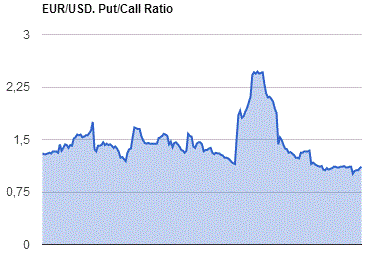
GBP/USD
Resistance levels (open interest**, contracts)
$1.3204 (1223)
$1.3107 (1115)
$1.3011 (371)
Price at time of writing this review: $1.2971
Support levels (open interest**, contracts):
$1.2893 (897)
$1.2796 (1891)
$1.2697 (1427)
Comments:
- Overall open interest on the CALL options with the expiration date October, 7 is 22836 contracts, with the maximum number of contracts with strike price $1,3450 (2862);
- Overall open interest on the PUT options with the expiration date October, 7 is 22964 contracts, with the maximum number of contracts with strike price $1,3000 (3707);
- The ratio of PUT/CALL was 1.00 versus 1.00 from the previous trading day according to data from September, 20
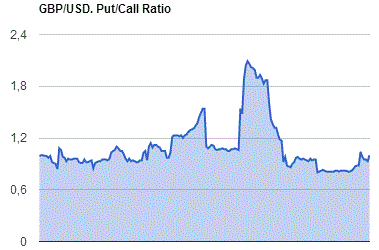
* - The Chicago Mercantile Exchange bulletin (CME) is used for the calculation.
** - Open interest takes into account the total number of option contracts that are open at the moment.
-
08:26
USD / JPY rose sharply to Y102.80 after the announcement of the Bank of Japan
USD / JPY rose updating the session high despite the fact that the Central Bank did not change the intrest rate, the regulator said that it will continue to increase monetary base, while inflation stabilizes above 2%. In addition, the Bank of Japan announced its readiness to further reduce the negative interest rates on deposits.
-
08:22
Bank of Japan holds rates, changes QQE parameters
According to rttnews, the Bank of Japan decided to modify the existing policy framework to achieve the inflation target at the earliest possible time.
"With a view to achieving the the price stability target of 2 percent at the earliest possible time, the Bank decided to introduce 'QQE with yield curve control'," the bank said Wednesday.
Accordingly, the bank will control short-term and long-term interest rates and also it will expand the monetary base until inflation exceeds 2 percent.
"With regard to the amount of JGBs to be purchased, the bank will conduct purchases more or less in line with the current pace - an annual pace of increase in the amount of outstanding of its JGB holdings at about 80 trillion yen," the bank said.
The BoJ will continue applying a negative interest rate of -0.1 percent to the policy rate balances in current accounts held by financial institutions.
-
06:19
Japan: BoJ Interest Rate Decision, -0.1% (forecast -0.1%)
-
02:32
Australia: Leading Index, August 0.0%
-
01:50
Japan: Trade Balance Total, bln, August -19 (forecast 202.3)
-
00:45
New Zealand: Visitor Arrivals, August 9%
-
00:28
Currencies. Daily history for Sep 20’2016:
(pare/closed(GMT +3)/change, %)
EUR/USD $1,1152 -0,20%
GBP/USD $1,2982 -0,39%
USD/CHF Chf0,9792 -0,07%
USD/JPY Y101,72 -0,11%
EUR/JPY Y113,45 -0,31%
GBP/JPY Y132,05 -0,49%
AUD/USD $0,7551 +0,19%
NZD/USD $0,7315 +0,19%
USD/CAD C$1,3192 -0,04%
-
00:00
Schedule for today, Wednesday, Sep 21’2016
00:30 Australia Leading Index August 0.1%
03:00 Japan BoJ Interest Rate Decision -0.1% -0.1%
03:00 Japan BoJ Monetary Policy Statement
03:00 Japan Bank of Japan Monetary Base Target 275
06:30 Japan BOJ Press Conference
08:30 United Kingdom PSNB, bln August 1.47 -10.3
12:30 Canada Wholesale Sales, m/m July 0.7% 0.2%
13:00 Switzerland SNB Quarterly Bulletin
14:30 U.S. Crude Oil Inventories September -0.559
18:00 U.S. FOMC Statement
18:00 U.S. Fed Interest Rate Decision 0.5% 0.5%
18:00 U.S. FOMC Economic Projections
18:30 U.S. Federal Reserve Press Conference
21:00 New Zealand RBNZ Interest Rate Decision 2% 2%
21:00 New Zealand RBNZ Rate Statement
-
